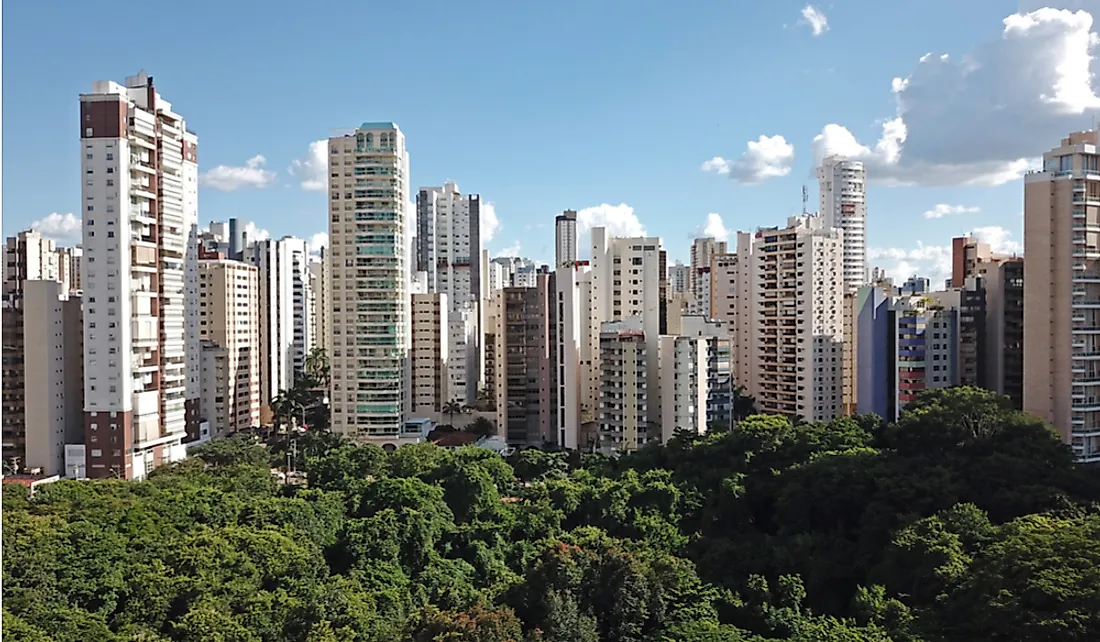What Is The Capital Of The Goiás State Of Brazil?

Goiás is a state located in the Center-West region of Brazil. The state encompasses a total area of 340,086 km2, making it the seventh most extensive state in the country. Additionally, Goiás has an estimated population 6,778,772, ranking as Brazil’s 12th most populous state, and the most populous in the Center-West region. Goiânia is the capital of Goiás and encompasses an area of approximately 739 km2. The city has a relatively flat landscape, with little few hills and lowlands. Goiânia has an average elevation of 749 m, and the city experiences a tropical wet and dry climate.
State of Goiás
The state's landscape is primarily characterized by plateaus, and tourists visit Goiás in large numbers to enjoy its spectacular natural scenery and cultural treasures. The Cerrado Protected Areas at Chapada dos Veadeiros and Emas National Parks, a UNESCO World Heritage Site, features scenic canyons, rapids, waterfalls, and valleys and is inhabited by unique flora and fauna species. The Araguaia River that flows through Goiás features more than 2 km of beaches during periods of drought.
The Capital: Goiânia
Goiânia has an estimated population of 1,466,105, making it the second most populous city in the Central-West region, and the 11th most populous in Brazil. It is a multicultural city that is home to a diverse range of ethnic communities due to high rates of immigration from surrounding areas. Goiânia’s population includes the following population groups: white (47.95%), Pardo or mixed-race (44.51%), Black (5.68%), Asian (1.68%), and Amerindian (0.16%). Various religions are also represented in the city. Roman Catholicism is the predominant religion, accounting for roughly half of Goiânia's population, while Evangelicalism and Spiritism are practiced by 32.4% and 4.2% of the population, respectively.
History of Goiânia
Vila Boa was the initial state capital of Goiás, and was selected when the state's economy was focussed on gold extraction. However, as its economy shifted towards agriculture and cattle-raising, Vila Boa was considered to be too remotely located to serve as the state capital. As a result, several plans to move the state capital were proposed between the late 18th century and the late 19th century. In 1891, the need to shift the capital was officially included within a change in the constitution. In the 1930s, when the government of Pedro Ludovico came to power in Goiás, the creation of a new capital became a reality. The present location of Goiânia was chosen and its foundation stone was laid in 1933. That same year, Goiânia was selected as the name for the new capital city through a contest in the local newspaper. In 1987, a radioactive contamination accident took place in Goiânia. Dubbed the Goiânia Radioactivity Accident of 1987, it is considered one of the world's worst nuclear disasters.
Economy of Goiânia
Goiânia has a highly profitable economy that is largely focused on agriculture and related products, including fertilizers and agricultural equipment. The second biggest industry in Goiânia is related to automobiles and services, such as repairs, reconditioning, and sales. Since Goiânia is the state capital, the government sector also plays an important role in the city's economy and generates a significant number of jobs. Goiânia also features a large number of medical clinics and services.











